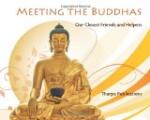The driver grew angry. He shouted at the horses and gave them cruel cuts with his whip. The horses stopped pushing and began to kick, without moving the cart at all.
By this time the workman had come up to the horses.
“Get down a minute,” said he to the driver, “and let me see what I can do.”
He went first to one horse and then to the other, stroking their necks and speaking kindly to them. Then he lifted off several heavy timbers and laid them on the ground. Finally he took from his dinner-pail a big red apple, which he cut in two, giving half to each horse.
When the horses had eaten the apple, the man mounted the cart and took up the reins.
“Come, now!” he said cheerily, giving the reins a little shake. “I am sure you can do it if you try once more. Now, then, there you go!”
The horses took new courage, and with all their might bent to their work. With a vigorous push and a great rattle of stones the cart went up into its place.
“It isn’t easy to work when you are being scolded.” said the workman, handing over the reins to the driver of the pair. “Try my way the next time. It pays.”
FAMOUS HORSES.
The horse has been known as man’s companion and helper from the earliest times. In Greek mythology horses play a very important part, as every one knows who has read the stories of Arion and the winged horse Pegasus. The most famous horse in history probably was Bucephalus (Bull Head), who belonged to Alexander the Great. Alexander was the son of Philip, king of Macedonia.
When the boy was about thirteen years of age, there was offered for sale to his father a superb white horse with a black mark, like a bull’s head, on his forehead. His price was twenty thousand dollars. He was brought before the king, but no one was able to mount him. Philip was angry and was about to send the horse away when Alexander begged to be allowed to try.
He went up quietly to Bucephalus and stroked him for a few minutes with a steady, careful hand. As he did so he noticed that the horse was afraid of his own shadow dancing on the grass before him.
Turning the frightened animal with his face to the sun, the boy leaped lightly on his back, and using every means to soothe him, soon brought him under complete control.
Bucephalus became Alexander’s constant companion. The horse was once taken prisoner by the barbarians against whom Alexander was fighting, but the concern shown by the great soldier was so serious that his favorite was promptly restored to him.
[Illustration: A Norman sire. By Rosa Bonheur.]
This famous horse died when he was thirty years old from wounds received on the field of battle. Alexander mourned his death as that of a dear friend and built a city as a monument to his memory.
Swift and Spurred On were horses that belonged to two Roman emperors. These horses were fed on almonds and raisins; they had ivory mangers and marble stalls; and one of them drank wine out of a golden pail. But I am sure they were too sensible to like such a life and would have preferred a handful of fresh grass and a drink of cold water.




